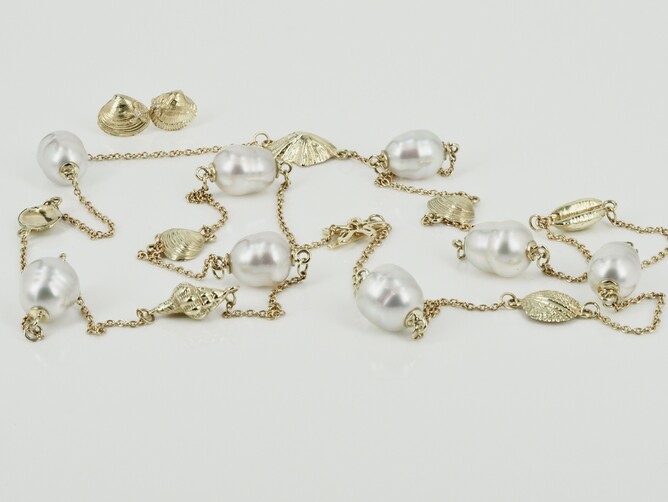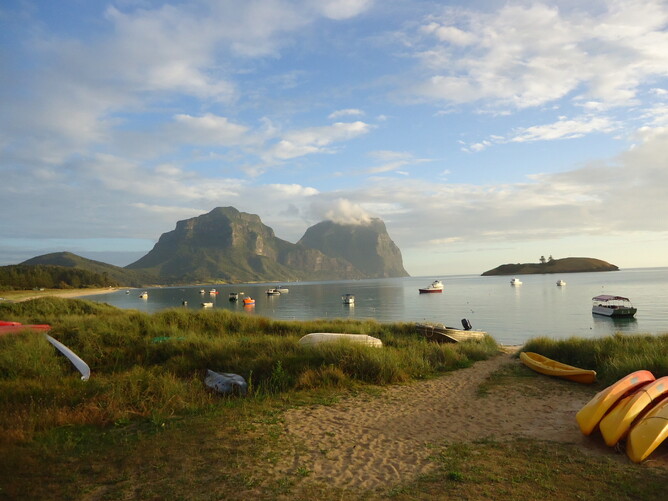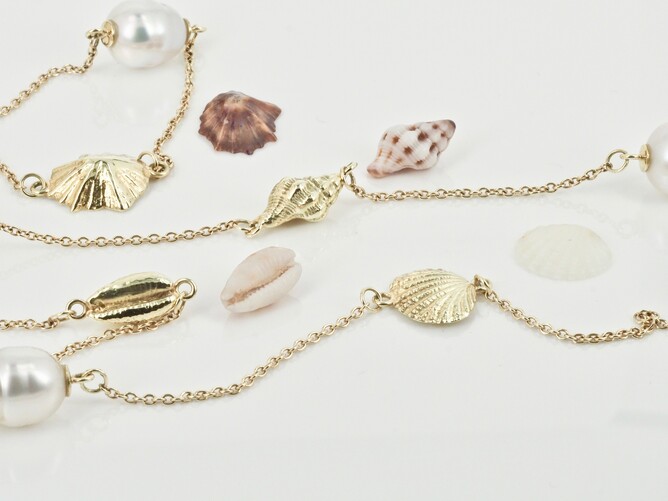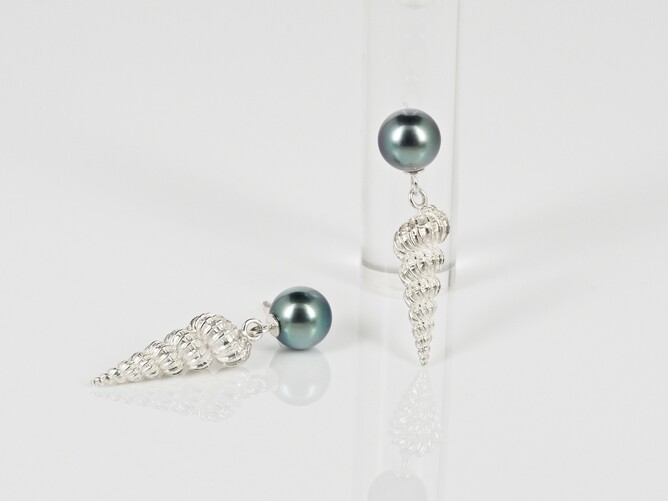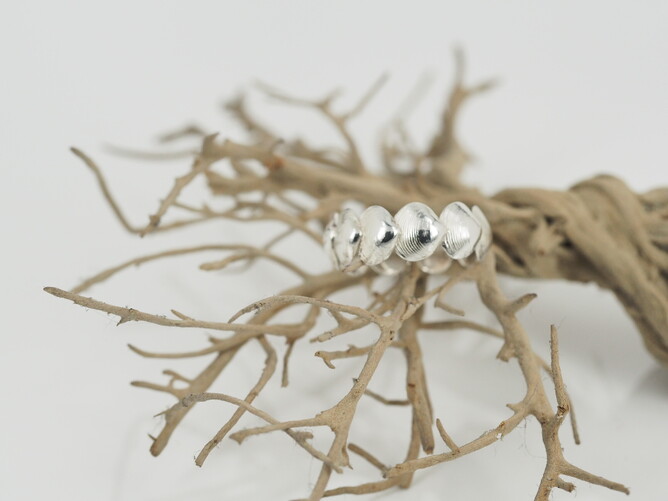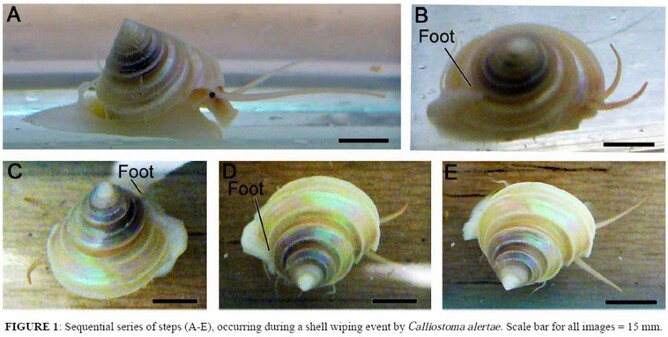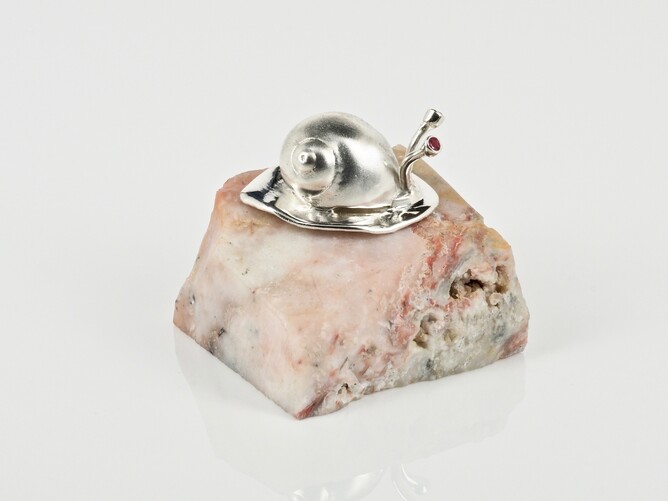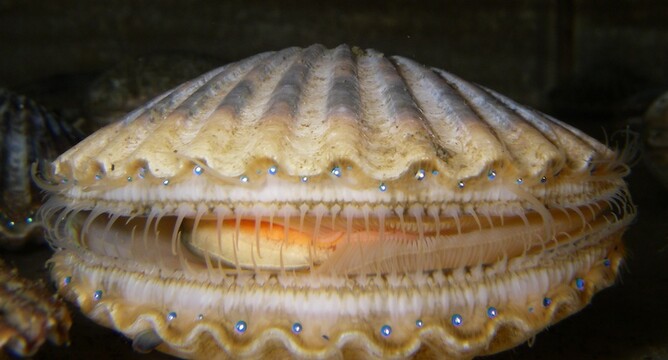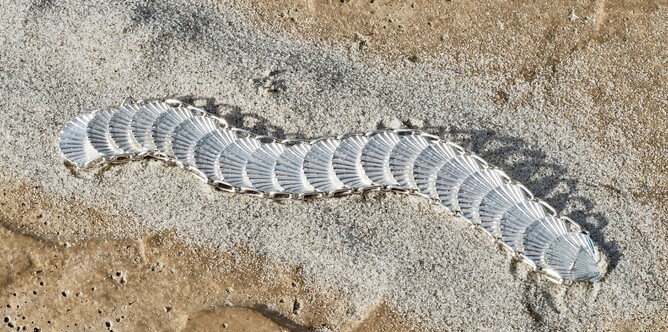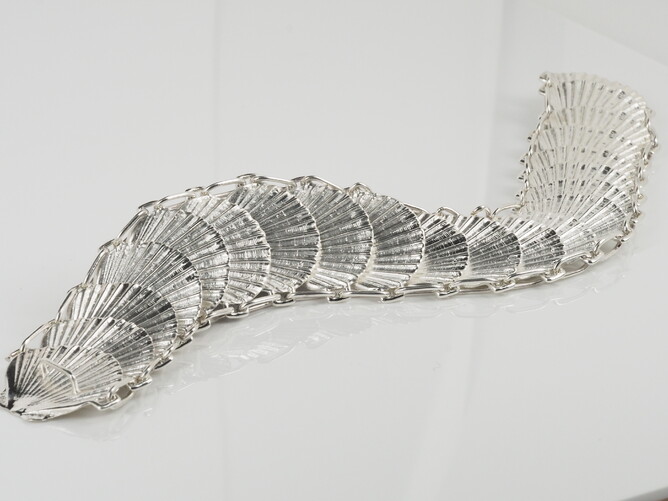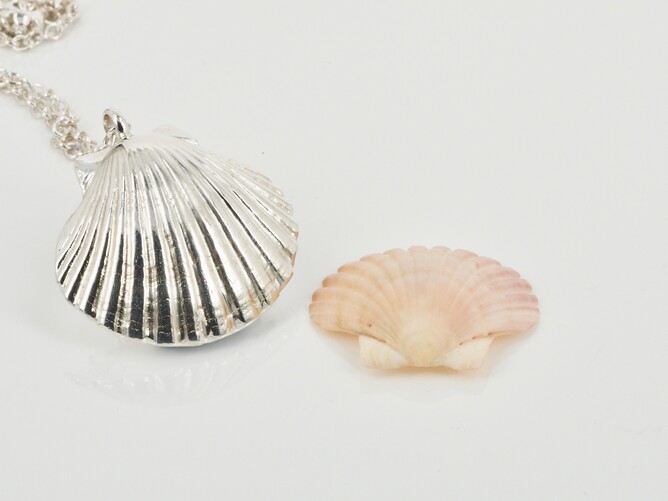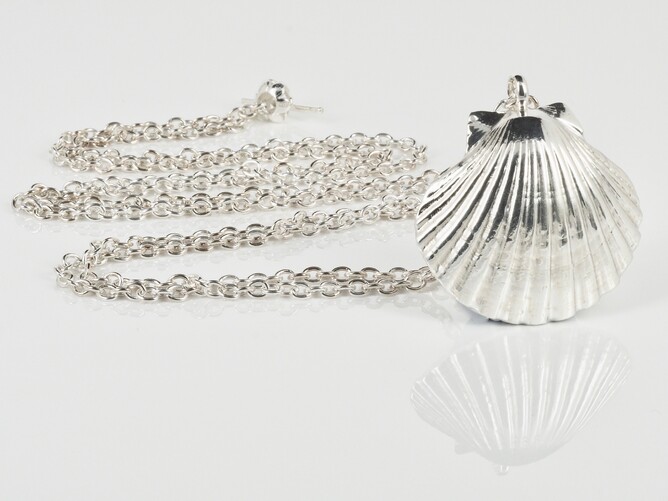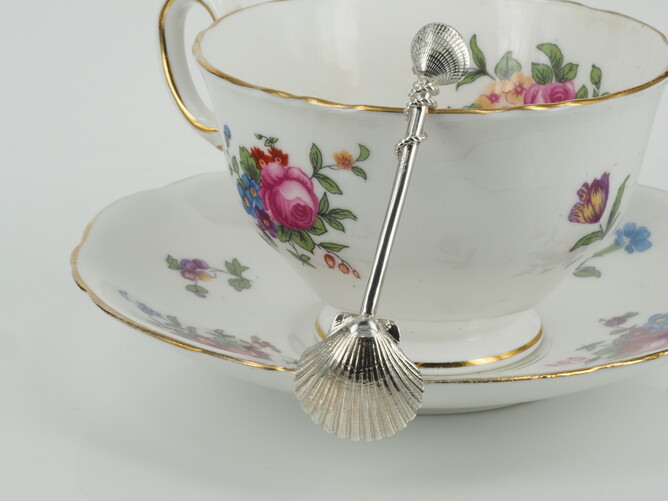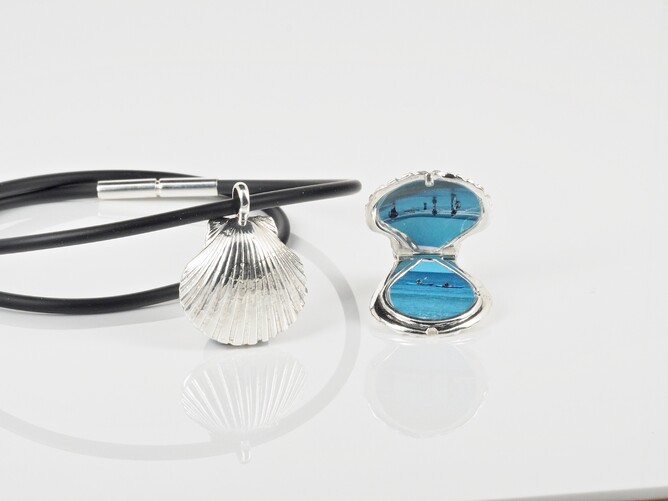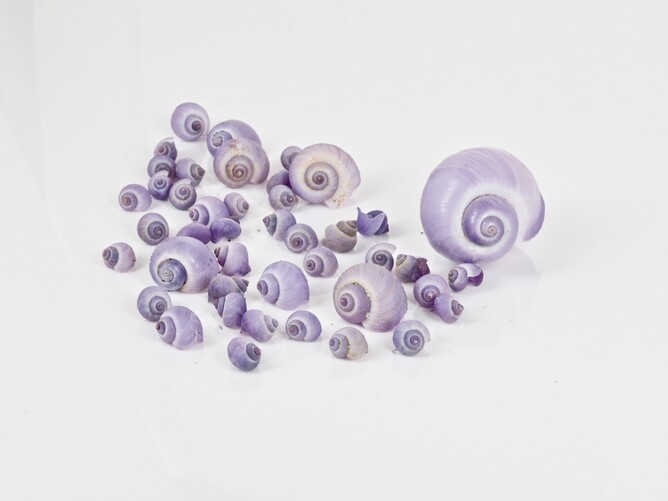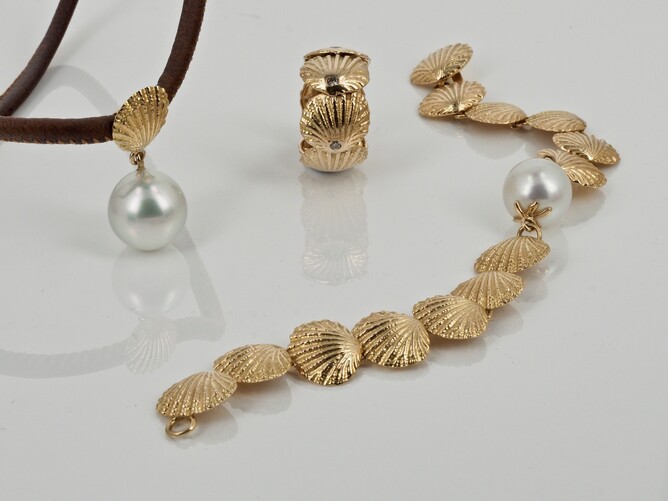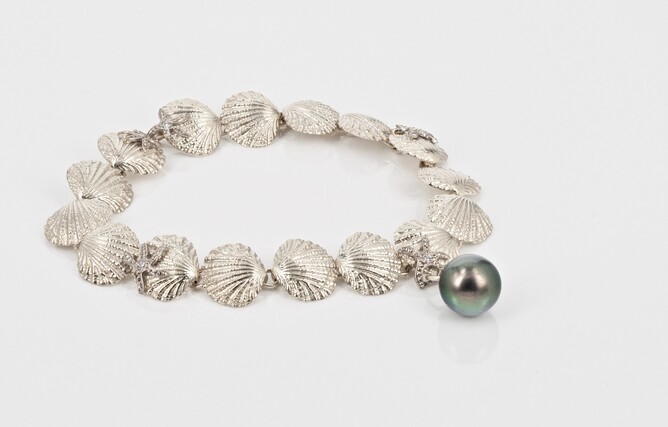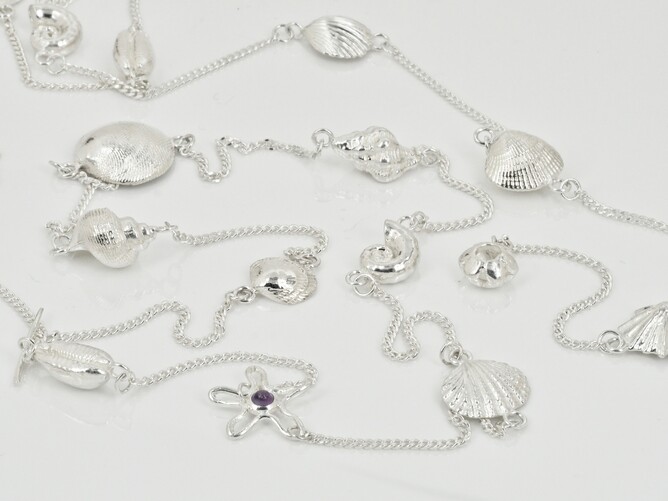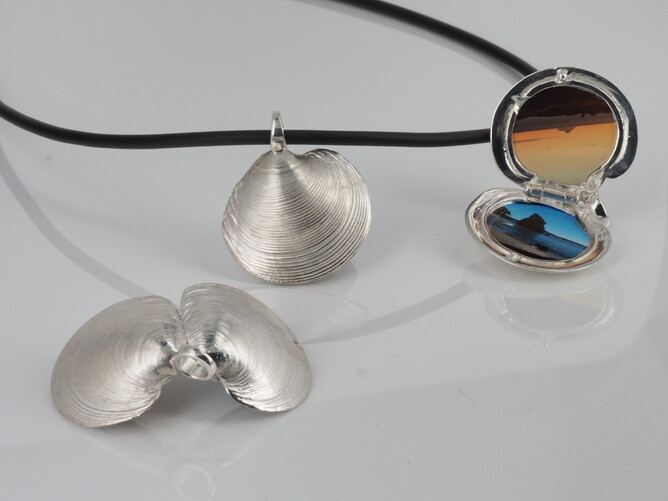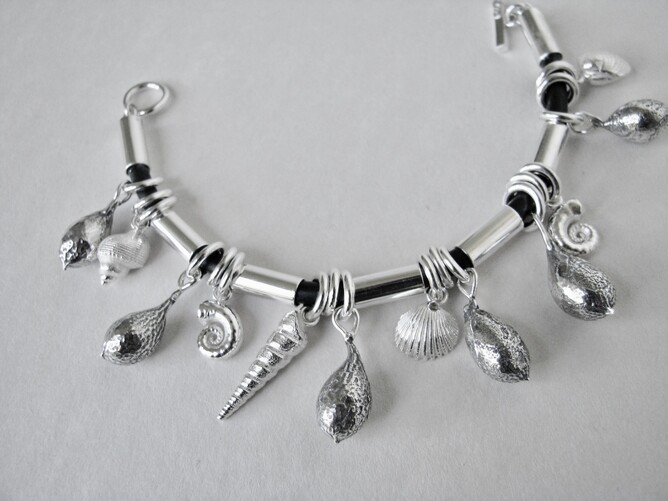How extraordinary and beautiful are seashells?
So many different shapes and colours with varying textures found littered along a shoreline - like a necklace around the sea.
Collecting pretty shells for decorative use is a pastime that has been enjoyed throughout history.
I am one of many to enjoy collecting shells: for their beauty, the reminder of a holiday, for feeling connected to the sea and to be able to make shell jewellery.
This blog was inspired by an amble along a beautiful beach on Lord Howe Island in search of interesting shells to use in my jewellery.
I picked up many shells with perfect small holes in them, something I had always assumed to be the result of erosion – (on reflection, not a logical assumption),
but after reading a book on the local flora and fauna, I discovered that these shellfish had in fact met with a rather unpleasant end (the details of their demise will be revealed). I realised that I took these oceanic treasures for granted and that I actually knew very little about them and so began, what was a long but interesting research project.
Shells from New Zealand and Australia
I have collected many shells over the years from New Zealand and Australian shorelines (empty shells). Australian shorelines are home to the world's largest variety of shells, some 10's of 1000's of them. Not all of them have been documented or possibly even discovered and some are almost too small to see.
In comparison, New Zealand shorelines are home to approximately 3600 species of shells. With such a huge variety of shells on New Zealand and Australian shorelines, one is spoilt for choice.
However, my choice for shells, to be used in shell jewellery, is limited by size and texture. A shell, once moulded and replicated in metal will be quite heavy, so smaller shells are preferable. Texture is also important as a smooth shell, albeit pretty in colour, has little to offer once moulded and cast. To date, I have approximately 25 different shell moulds to choose from.
Pictured below - New Zealand sea shells hanging on a hand woven bracelet - all sterling silver.
Silver Shell Bracelet.
A tree of wax shells
Pictured below are three Australian sea shells that I have had moulds taken from.
From left to right, the shells are: Australian bivalve (undocumented shell and my favourite shell), a Zeland false limpet - family Pulmonates, and an Ornate lucine - family Lucinidae.
The blue/green wax has the three shells on it, ready for the final stage of casting.
In the next photo, I have laid the original shells by the 14ct yellow gold cast ones. I wanted you to see the transformation of an actual shell to a cast one.
South Sea pearl necklace with gold shells.
Animal Kingdom
I will take you on a short trip back to high school biology.
Mollusca is a major division of the animal kingdom and there are seven classes of shellfish in this division. There are only two classes of shellfish that I have ever collected:
1. Gastropoda, is the largest of the mollusca class and includes snails and slugs, the latter I don’t collect! The shells can also be called univalves.
2. Bivalvia is the second largest of the mollusca class and includes shellfish like mussels, scallops, pearl bearing–oysters and more.
Most of us when we find a shell can identify it with a general or common name. The problem with a common name is that it can vary from place to place, so to correctly identify the animal, through use of the taxonomic system, Latin nomenclature is used. It is an internationally recognised language.
Clever Animals
I marvel at how a seemingly simple creature can lay down such specific and intricate patterns in colour and structure.
Exactly how they do so is not a question we can easily answer, but here is one explanation from text, ‘A Handbook to Australian Seashells’ by Barry Wilson.
"Calcium is taken into the body either with food or directly by absorption from the water. Within the body it combines with carbonate to form calcium carbonate (lime). The calcium carbonate that forms the shell and the pigments that colour it, are secreted by glands in the mantle. The precision by which the material is laid in position, resulting in the unique form and sculpture of each species, is one of the great mysteries of life. As the calcium carbonate is deposited the mantle secretes pigments that are laid down as spots, lines or other marks, depending on the movement of the mantle."
How a shell renovates its home
As a shellfish puts on weight, it becomes necessary for it to renovate its house. The animal does this by adding shell material to the edges of its valve (shell) or in the case of a gastropod, its aperture (opening). On some shells, you can see the fine growth rings.
Gastropods (excluding limpets) increase their opening like a bricklayer lays bricks for a chimney – except that the shell's chimney gets wider as it gets taller. For added strength, the shell adds ribs and buttresses, just as an engineer would do so to strengthen a building.
The process of a shell's growth is summed up well by the author Barry Wilson.
“The complexity of the mathematics of this kind of growth and the consistency with which each species produces precisely the form that characterises its kind are beyond comprehension."
Pictured below are a pair of specialty chimney earrings, Tahitian pearls with sterling silver shells. The shells are wentletraps, family Epitoniidae.
Tahitian pearl earrings with silver shells
Molluscs, Hunter-gatherers
The methods in which molluscs gather and ingest their food, are as varied as there are shells. So I will give you a simplified version.
Bivalvia are filter feeders. They take in seawater, retain and absorb the nutrients it carries with it and expel the water in their own unique way.
Pictured below are a variety of bivalves situated just below the ocean floor (except for the mussel, far left), taking in seawater and nutrients through one syphon and expelling water out the other. (Picture from, A Handbook to Australian Seashells by Barry Wilson.)
Morning Star Shell Ring
Made to order. Price NZD350 Click here for more details.
Greedy snails
Gastropods (focusing on snails) have a slightly larger diet range.
For their nutrients they can eat mud (imagine that ‘your life is to eat and poop mud!’), algae, detritus or other molluscs.
The picture below is courtesy of NIWA. This cute, colourful snail takes one hour to slowly clean off its shell. Picture B shows its foot gently sweeping its shell. One would assume this process occurs for nutrients and obviously to keep a clean house!
How are the holes caused?
It is at this point in my blog that I can enlighten you as to how the shells with small holes in them, came to be.
Carnivorous snails travel the ocean floor, on it or just below the sandy surface, in search of prey – through means of smell.
Once a victim has been located, they set to work with their radula.
What is a radula?
A radula is a flat flexible file with rows of tiny chitinous (chitin is a complex substance) teeth.
Using their radula they rasp or some texts say ‘drill’ away at their victim’s shell. It can take from 45mins to 2 days for the snail to get through to the animal inside. Once through the shell, the snail inserts its proboscis (an elongated sucking mouthpart that is typically tubular and flexible) and sucks up the animal inside.
My initial reaction to this was horror – what a way to die!
The horror comes from the thought of a slow and painful death. However, after discussion with a medical pain specialist, I was reasonably assured that the mollusc would not feel pain – due to its lack of a brain and inability for emotion.
The definition of Pain from IASP (International Association for the Society of Pain) is as follows;
“An unpleasant sensory and emotional experience associated with actual or potential tissue damage, or described in terms of such damage”
Pictured below is a carnivorous snail, commonly known as a moon snail - family name Naticidae. I have never incorporated this particular shell in a piece of jewellery, as it is too heavy. It was fun being able to create this guy, affectionately known as Gary (if there are any Sponge Bob fans out there), for this blog. He is a paperweight or ornament.
Paper weight.
Beautiful Scallops, Family Pectinidae
This animal has so many unique physical and historical aspects to it, that I decided it needed a heading of its own.
Attributes of the Scallop.
- Pretty shell
- Delicious to eat
- Found on most shorelines around the world
- Shape has been and still is used as relief in architecture
- Pattern is used on many coats of arms, including Prince William and Prince Harry’s
- Symbol for the Apostle Saint James, which is why it is the symbol for the Camino Trail.
- Unique physical characteristics
Pretty eyes
A unique physical characteristic of the scallop, is that they have eyes. They have anywhere between 10 – 100 eyes, each one approximately one millimetre in size and they are situated along the edge of their mantle.
There are a few other species of bivalves that have eyes, but none quite like the scallops. Their eyes are made up of a double layered retina, the outer responding to light, the inner to abrupt darkness. As molluscs don’t have a brain, the information received from their eyes is processed in what is called a ganglia.
Ganglia, in a simplified description, house incoming (afferent) and outgoing (efferent) nerves and behave like a reflex. Humans and other animals have ganglia; they are responsible for our heart beating, our gut working and other involuntary functions.
Retreat!
Upon sensing abrupt darkness, the reflex caused by the scallop’s ganglia is for it to move!
This leads to the next unique characteristic of the scallop - their ability to propel themselves by either jumping or swimming. They are able to do this by rapidly opening and closing their valves (shells), taking in and expelling seawater out through two different means, depending on which direction they are travelling. The design of their shell, also aids their ability to swim.
Scallops can only jump or swim for about 5 short bursts before they are exhausted and need to rest for several hours. Being able to swim gives them the ability to migrate for considerable distances.
The design for the bracelet below is based on an old-fashioned coin bracelet. Instead of coins, I have used flat scallop shells. I really need a video to show you how beautifully fluid this piece is and how it looks when worn. Imagine it in different coloured golds - orders taken....
Shell Bracelet.
Scallop shell symbol for Saint James
The Apostle James, is the patron Saint of Spain - he's celebrated on the 25th of July (a timely release date for this blog). His remains are reported to be buried at Santiago de Compostela in Galicia.
There are a few theories as to why the scallop shell is Saint James’s symbol but the one I am sharing with you seems the most logical.
Many of you will have heard of the Camino walk. It is a pilgrimage that has been undertaken by countless people for nearly two thousand years. The journey has various starting points and finishes at the Cathedral in Santiago de Compostela, where Saint James lies.
The Iberian Peninsula, where Santiago de Compotela is, is rich with scallop shells. So, by way of showing that you had completed the pilgrimage, you would collect a scallop shell from the beach, tie it to a cord and wear it around your neck. At some point in time though, scallop shells became available for purchase before one reached the end of the Camino walk. No doubt someone saw the potential for a good business venture.
Scallop shell pendant.
Finding scallop shells - back and front
Below is a scallop shell locket I have recently remaster patterned. It is almost impossible to find a small scallop shell on the beach, front and back attached. Because the scallop shell is so streamlined it has a very small hinge and once the animal inside is dead the two shells break apart very quickly, unlike the Venus shell, (locket pictured further down) which has a much larger hinge so attached shells are more likely to be found on the beach.
Do molluscs have a future?
Our oceans absorb an estimated 30% of our human made carbon dioxide emissions. This means we are altering the PH level of our oceans and making them more acidic. Again, some high school biology here and you may remember that calcium carbonate dissolves in acid. So many of our unique and beautiful molluscs are finding it more and more difficult to lay down their shell and reproduce.
We can all do our bit to help and if you want to know how, please click here.
Almost finished
Learning more about these precious creatures has been a great eye opener and there are many more things I would like to share with you - like the violet snail, Janthina janthina, who, aided by bubbles, floats along the sea in search of its prey, blue bottles, (stingers) and by-the-wind-sailor, Velella velella.
Conclusion
And so, what I have shared with you is but a tiny ripple, in an ocean of information - not a bad metaphor.
I think seashells are amazing creatures and incredible treasures of nature. Incorporating them in my jewellery is a way of being able to permanently enjoy their beauty. There is quite a lot of shell jewellery in NZ, so I endeavour to make pieces that are slightly different to anything else.
Shell jewellery can be put together in any order, style or design. If you have a special shell or something you would like custom-made for you, then I would be delighted to help.
Gold shell jewellery.
Thank You
On my quest to find out more about shells, I have bought books, emailed lecturers at Universities around NZ and joined the New Zealand and Australian Facebook shell groups.
I am very grateful to all who have replied and answered my many questions or pointed me in the direction of where to find an answer.
References
A Handbook to Australian Seashells on Seashores East to West and North to South, by Barry Wilson
Which Seashell? (Identity New Zealand Seashells), by Andrew Crowe
teara.gov.nz . - sea shells
NIWA
The New Zealand Sea Shore, by John Morton and Michael Miller
Wikipedia on scallops
More shell jewellery!
White gold shell bracelet with hand engraved starfish, diamonds and a Tahitian pearl.
Necklace
Long necklace of shells and a starfish with a cabochon amethyst centre.
Locket
Venus shell locket in sterling silver.
